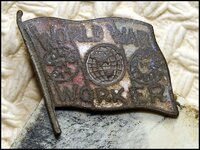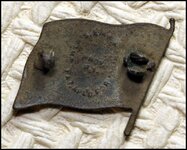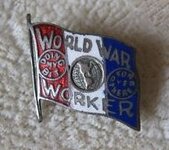FooserPaul
Hero Member
I recovered this about 2 hours ago...
World War Worker on the front... Prov RI Pat Applied for on the back...
I did a Google search and looked thruogh a bunch of images... I could not match it up at all...
Anyone have any knowledge about this pin ??
World War Worker on the front... Prov RI Pat Applied for on the back...
I did a Google search and looked thruogh a bunch of images... I could not match it up at all...
Anyone have any knowledge about this pin ??









